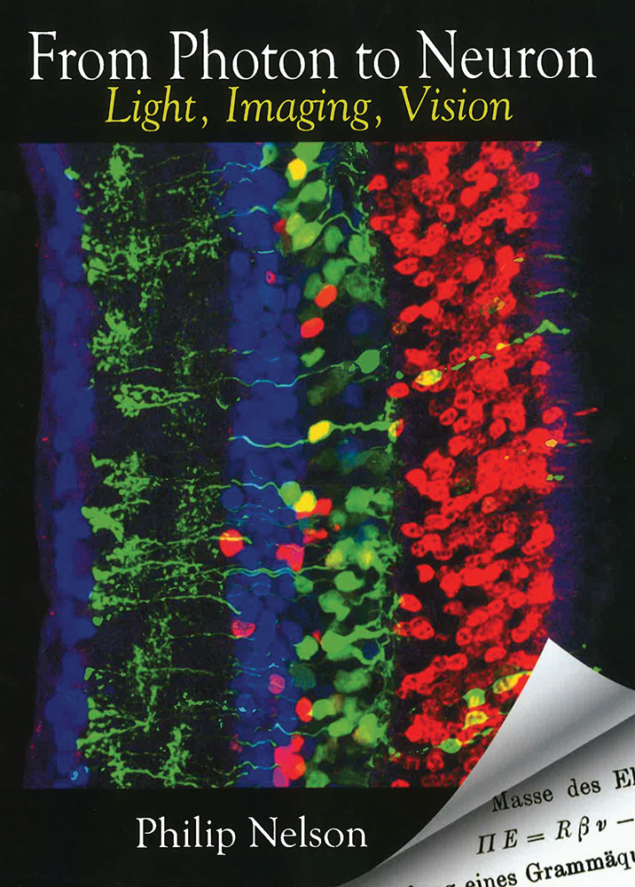By Philip Nelson
Princeton University Press 2017

This book is as elegant as it is deep. A masterful tour of the science of light and vision. It goes beyond artificial boundaries between disciplines and presents all aspects of light as it appears in physics, chemistry, biology and the neural sciences.
The text is addressed to undergraduate students, an added challenge to the author, which is met brilliantly. Since many of the biological phenomena involved in our perception of light (in photosynthesis, image formation and image interpretation) happen ultimately at the molecular level, one is introduced rather early to the quantum treatment of the particles that form light: photons. And when they are complemented with the particle-wave duality characteristic of quantum mechanics, it is much easier to understand a large palette of natural phenomena without relying on the classical theory of light, embodied by Maxwell’s equations, whose mathematical structure is far more advanced than what is required. This classical approach has the problem that eventually one needs the quantisation of the electromagnetic field to bring photons into the picture. This would make the text rather unwieldly, and not accessible to a majority of undergraduates or biologists working in the field.
In the same way that the author instructs non-physics students in some basic physics concepts and tools, he also provides physicists with accessible and very clear presentations of many biological phenomena involving light. This is a textbook, not an encyclopaedia, hence a selection of such phenomena is necessary to illustrate the concepts and methods needed to develop the material. There are sections at the end of most chapters containing more advanced topics, and also suggestions for further reading to gain additional insight, or to follow some of the threads left open in the main text of the chapter.
A cursory perusal of the table of contents at the beginning will give the reader an idea of the breadth and depth of material covered. There is a very accessible presentation of the theory of colour, from a physical and biological point of view, and its psychophysical effects. The evolution of the eye and of vision at different stages of animal complexity, imaging, the mechanism of visual transduction and many more topics are elegantly covered in this remarkable book.
The final chapters contain some advanced topics in physics, namely, the treatment of light in the theory of quantum electrodynamics. This is our bread and butter in particle physics, but the presentation is more demanding on the reader than any of the previous chapters.
Unlike chapter zero, which explains the rudiments of probability theory in the standard frequentist and Bayesian approaches that can be understood basically by anyone familiar with high-school mathematics, chapters 12 and 13 require a more substantial background in advanced physics and mathematics.
The gestalt approach advocated by this book provides one of the most insightful, cross-disciplinary texts I have read in many years. It is mesmerising and highly recommendable, and will become a landmark in rigorous, but highly accessible interdisciplinary literature.





